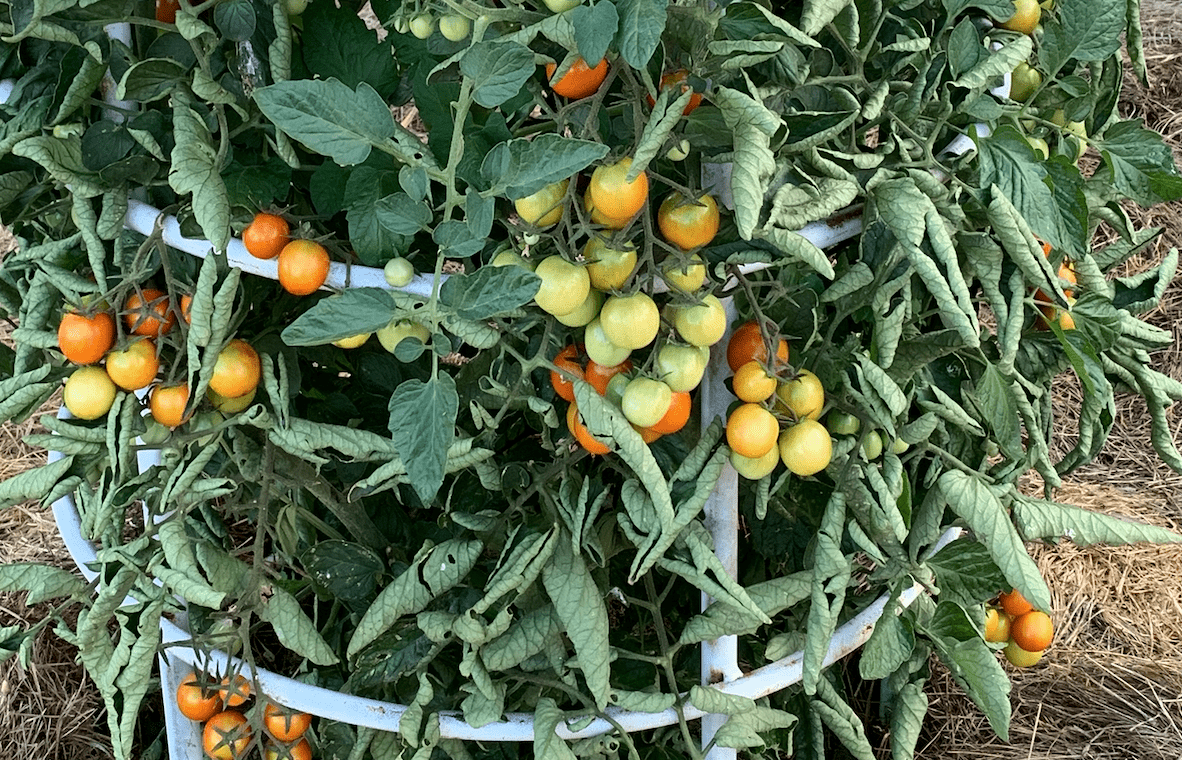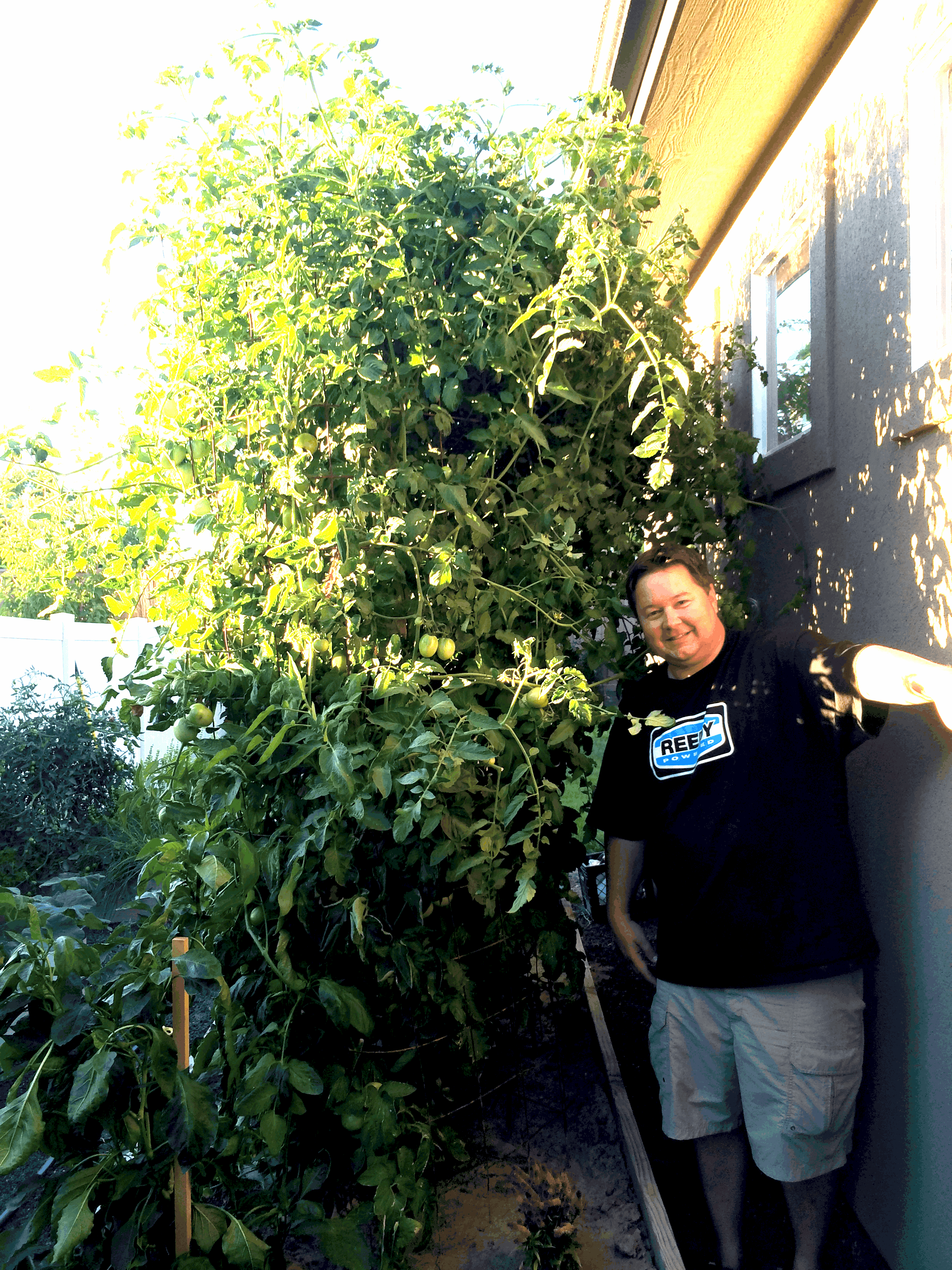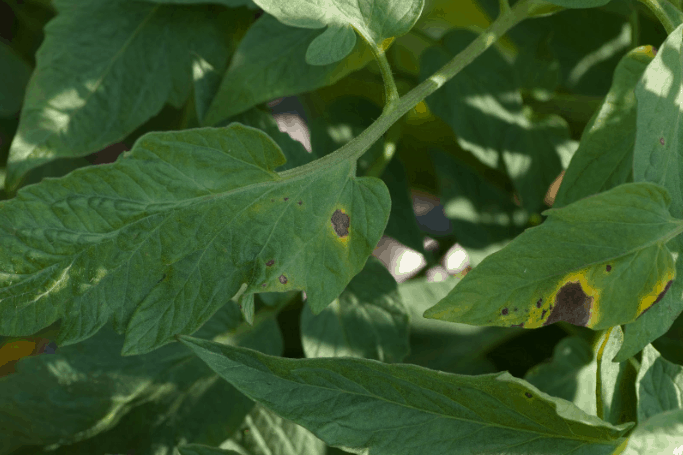Blight refers to a family of diseases that mostly affect tomatoes and potatoes. Early blight is caused by a fungus-like organism (alternaria solani) and can cause major damage to all parts of the plant. While symptoms of early blight may not always entirely destroy the plant, they can severely hamper growth and fruit production. Weak, poorly nourished, or stressed plants are much more susceptible to blight, so growing strong tomato plants by using the best tomato fertilizer is key.
As the name suggests, early blight mostly occurs early in the growing season, but can happen at any time. The disease overwinters on infected plant tissue and spreads rapidly, especially during times of wet, humid weather. It is spread by infected seeds or plant tissue, irrigation, splashing rain, insects, and even the wind.
Symptoms of Early Blight on Tomatoes
Early blight usually first appears on older leaves. You will see small brown spots with concentric rings that form a bull’s eye pattern. It will then spread out on the surrounding surfaces, causing the whole leaf to turn yellow and die. Dark lesions may also occur on the stem. As the lesions grow, they start to show the same concentric rings as the leaves. On the fruit, blight spots normally start on the stem end. It causes dark areas that are sunken in and the same concentric circles. Early blight can affect ripe and green fruit. Eventually, the whole plant will be infected and will likely die.
Early Blight Prevention and Treatments
Once early blight strikes your garden, it may be too late, so prevention is key. Here are some tips and tricks to keep early blight away:
- Buy your plants from a trusted source or start your own from seed
- Don’t plant tomatoes in the same spot year after year
- Choose blight resistant varieties
- Space plants at least 36-48 inches apart to increase airflow and light
- Avoid chemical fertilizer and use the best natural fertilizer to grow healthy, strong plants
- Use drip irrigation or soaker hoses, rather than sprinklers
- Clear the garden of debris
- Apply a copper-based fungicide before the first signs of blight appear
- If one plant becomes infected, it is often best to tear it out immediately so that the disease doesn’t spread to others. Disinfect the pruning shears used, and burn or bag the diseased plant. Do not compost it.
Early blight is a very common problem with tomatoes, but following these tips and doing your best to grow strong, healthy plants is a great way to avoid the disease. Happy Growing!
Photo Credit: Early blight on tomato leaves by Dwight Sipler [CC BY 2.0 (https://creativecommons.org/licenses/by/2.0/] via Flickr



